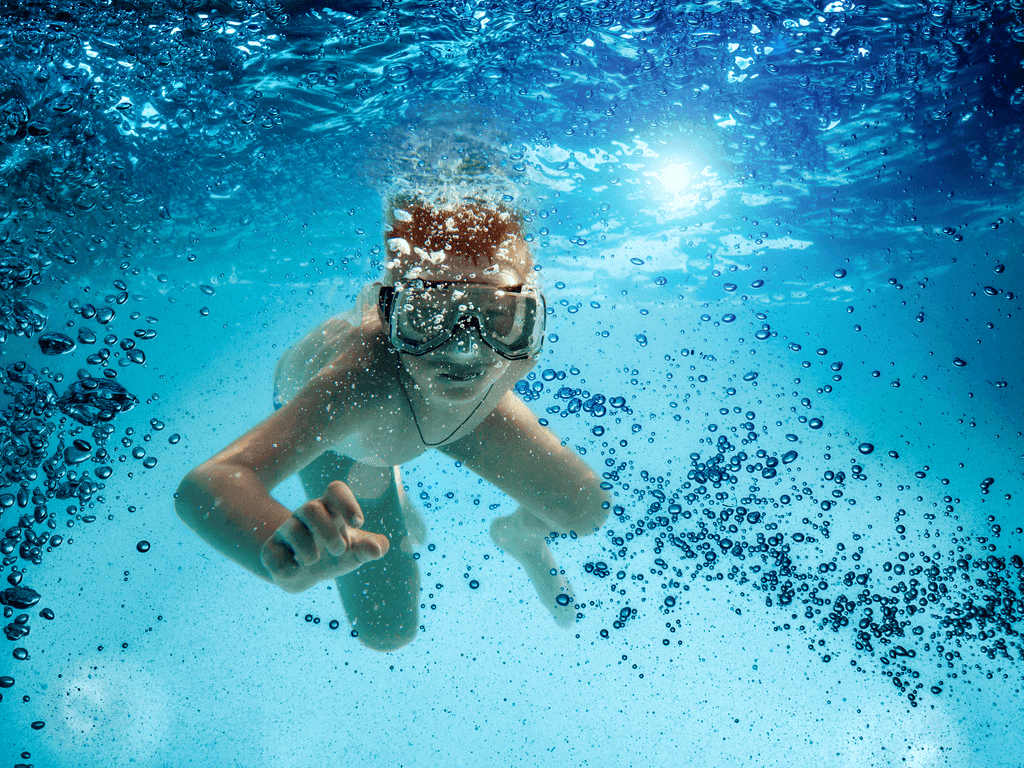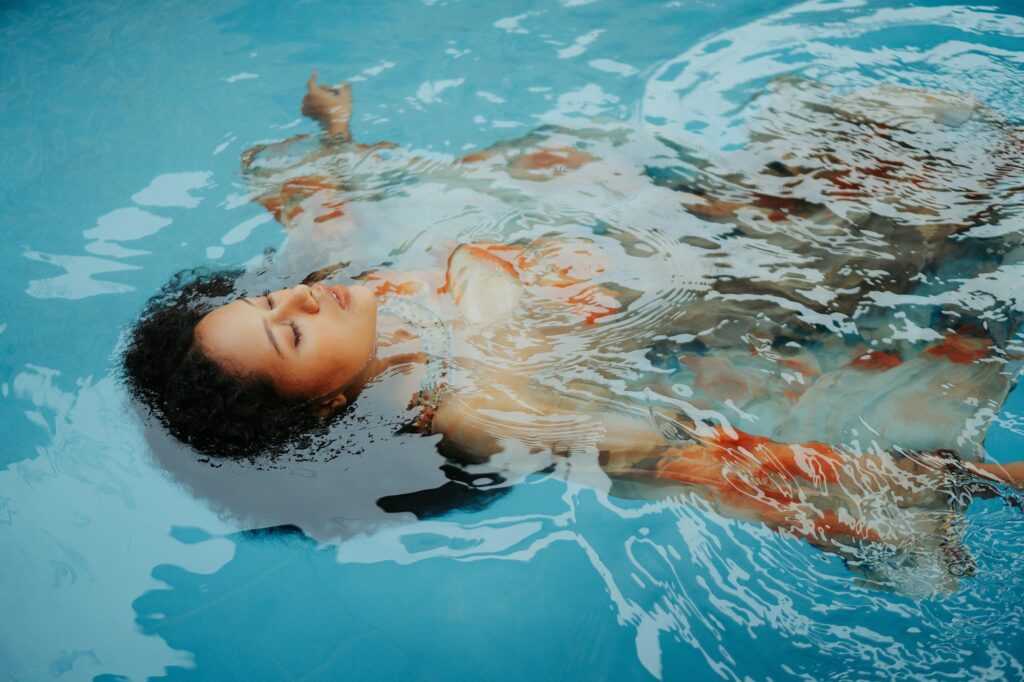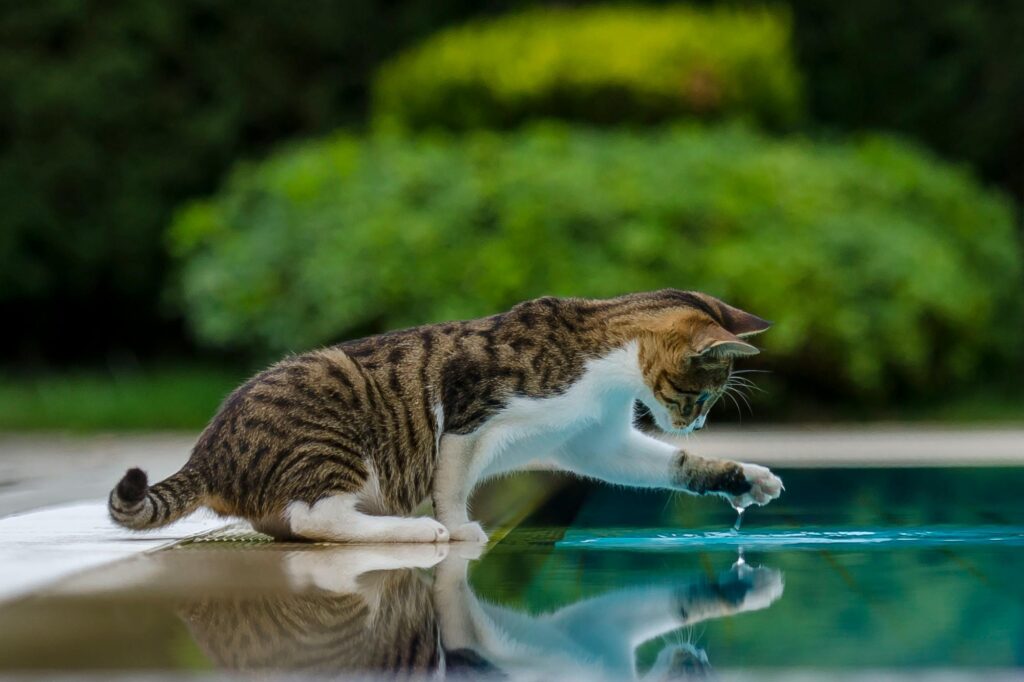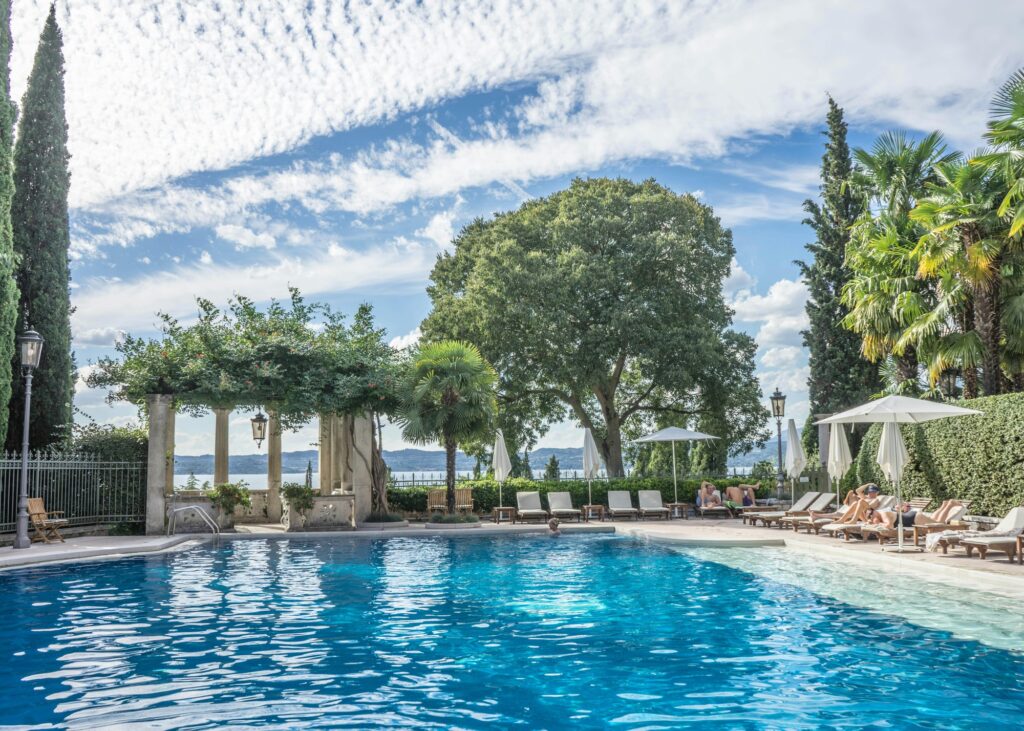
Mineral Pool vs. Saltwater Pool: Which One is Right for You?
Choosing the right pool system is crucial for ensuring a comfortable, low-maintenance, and enjoyable swimming experience. While traditional chlorine pools have been widely used for decades, many pool owners are now considering saltwater pools and mineral pools as alternatives.
Both options offer a gentler approach to pool sanitation, reducing the need for harsh chemicals while maintaining clean and safe water. However, they work differently and come with their own set of advantages and challenges.
This guide will provide an in-depth comparison of saltwater and mineral pools, covering their benefits, maintenance requirements, installation process, costs, and long-term considerations. By the end, you’ll have all the information needed to determine which system is best for your home.
What is a Saltwater Pool?
A saltwater pool utilizes a salt chlorinator system to generate chlorine through a process known as electrolysis. The system continuously converts dissolved salt into chlorine, keeping the water sanitized without the need for manual addition of chlorine tablets or liquid.
Many people mistakenly believe that saltwater pools are completely chlorine-free; however, this is not the case. Instead, they produce a steady and controlled amount of chlorine, eliminating the harsh chemical spikes common in traditional chlorine pools.

Benefits of Saltwater Pools
Saltwater pools have gained popularity among homeowners due to their advantages over traditional chlorine pools. They offer a gentler swimming experience with lower maintenance requirements. Below are some of the benefits of a saltwater pool.
Softer Water Feel
One of the most noticeable differences when swimming in a saltwater pool is the silky-smooth texture of the water. The dissolved salt creates a gentle, luxurious feel, making it softer on the skin compared to chemically treated pools. Swimmers often describe the sensation as similar to swimming in a natural body of water, like an ocean or a mineral spring, without the harsh salt concentration. This added comfort makes saltwater pools a preferred choice for families and individuals with sensitive skin.
Gentler on Eyes and Skin
Traditional chlorine pools often cause red, irritated eyes and dry, itchy skin due to high chlorine levels and frequent chemical spikes. Saltwater pools, on the other hand, generate a steady and controlled amount of chlorine, significantly reducing eye irritation and skin dryness.
For individuals with sensitive skin, eczema, or chlorine allergies, saltwater pools provide a much more comfortable swimming environment. The naturally occurring sodium chloride also helps retain skin moisture, leaving your skin feeling hydrated and refreshed after a swim, rather than dry and tight.
Less Chemical Handling
One of the biggest advantages of a saltwater pool is the reduced need for manual chemical handling. Unlike traditional pools that require regular additions of chlorine tablets or liquid chlorine, a saltwater pool’s electrolytic chlorine generator (ECG) continuously produces chlorine as needed.
This self-regulating process helps maintain consistent sanitation levels, eliminating the hassle of frequent chemical testing and adjustments. As a result, pool owners spend less time worrying about chemical imbalances and more time enjoying their pool.
Additionally, because there is no need to store large amounts of chlorine, saltwater pools are safer, reducing the risks associated with chemical spills, accidental exposure, and strong fumes.
Reduced Chlorine Odor
One of the common complaints about traditional pools is the strong chlorine smell, which can linger on the skin, hair, and swimsuits long after swimming. This odor is caused by chloramines, which are formed when chlorine binds with contaminants like sweat, oils, and debris in the water.
Saltwater pools, however, maintain a more stable and efficient chlorine level, leading to fewer chloramines and significantly reducing unpleasant odors. Many swimmers find that they can swim longer without the overpowering smell of chlorine sticking to their skin and hair.
This benefit is particularly advantageous for indoor pools, where chlorine fumes can build up in enclosed spaces, causing respiratory discomfort. A saltwater system helps create a fresher, more enjoyable swimming environment with cleaner air quality.
Lower Long-Term Chemical Costs
Although installing a saltwater pool system incurs a higher initial investment, it ultimately results in lower long-term maintenance costs. Traditional pools require continuous purchases of chlorine tablets, shock treatments, and balancing chemicals, which can add up to a significant expense over time.
In contrast, saltwater pools rely primarily on pool-grade salt, which is cheaper than commercial chlorine products. Since the salt does not evaporate, it remains in the water, requiring only occasional replenishment due to splash-out or dilution.
Additionally, because the salt chlorinator automates chlorine production, fewer chemicals are wasted, leading to more efficient and cost-effective pool maintenance. Over several years, the savings on chemical costs can help offset the initial expense of installing a saltwater system, making it a financially wise investment for long-term pool owners.

Challenges of Saltwater Pools
While saltwater pools offer numerous benefits, they also present a few challenges that pool owners should consider before making the switch. Understanding these potential drawbacks can help you make an informed decision and ensure proper maintenance for long-term enjoyment.
Higher Initial Investment
One of the biggest barriers to installing a saltwater pool is the higher upfront cost. A salt chlorinator system typically costs between $1,000 and $2,500, which is significantly more expensive than the initial setup for a traditional chlorine or mineral pool.
In addition to the cost of the generator, other potential installation expenses include:
- Upgrading to corrosion-resistant materials to prevent damage from salt exposure.
- Modifications to existing plumbing and filtration systems to accommodate the saltwater conversion.
- Increased electrical usage due to the chlorine generation process, which requires continuous power.
While saltwater pools offer long-term savings on chemical costs, the initial investment can be a major consideration for those on a budget.
Corrosion Issues
Saltwater, while beneficial in many ways, can be highly corrosive to pool components, particularly those made of metal. In addition to the salt, salt chlorinators add sodium hydroxide to the water as a byproduct of the chlorine generation process. Sodium hydroxide is the active ingredient in Draino and is highly toxic and corrosive. Over time, exposure to salt and sodium hydroxide can lead to rust and deterioration of:
- Metal ladders and handrails
- Pool lighting fixtures
- Pump and heater components
- Fencing and nearby metal structures
- Pool decking
- Pool landscaping
To prevent corrosion, it’s crucial to:
- Choose corrosion-resistant materials, such as stainless steel or composite plastics, for ladders and fixtures.
- Regularly rinse and clean any exposed metal parts with freshwater to minimize salt buildup.
- Use a zinc anode (sacrificial anode) to help absorb stray electrical current to reduce the risk of metal degradation.
- Keep the chlorine level as low as possible to minimize the sodium hydroxide byproduct.
Pool owners near coastal regions or areas with high humidity should be especially cautious, as these factors can accelerate salt-related corrosion.
Regular Salt Cell Maintenance
The salt cell is the heart of a saltwater pool system, responsible for converting salt into chlorine. However, like any other pool component, it requires regular maintenance to ensure optimal performance.
One of the most common issues with salt cells is calcium buildup, which can reduce efficiency and lead to malfunctions. If not cleaned periodically, the cell plates can become coated, preventing the proper conversion of salt into chlorine.
To maintain the longevity and effectiveness of the salt cell, pool owners should:
- Inspect and clean the salt cell every 3 to 6 months, depending on water hardness and usage.
- Use a mild acid solution or a cell cleaning kit to dissolve any calcium deposits.
- Monitor the chlorine output levels and ensure the system is functioning correctly.
Failing to maintain the salt cell can result in poor sanitation, requiring additional chlorine or system repairs, which negates the convenience of a saltwater system.

Salt Level Adjustments
Although saltwater pools do not require frequent chlorine additions, salt levels must still be monitored and adjusted periodically to ensure optimal water quality. Over time, water evaporation, splash-out, and backwashing can cause the salt concentration to decrease, reducing chlorine production and negatively impacting water quality.
To keep a balanced salt level, pool owners should:
- Test salt concentration regularly using a saltwater test kit.
- Add pool-grade salt when levels fall below the recommended range (typically 2,700 to 3,400 ppm).
- Avoid over-salting the pool, as excessive salt can lead to scaling, cloudy water, and equipment strain.
Although salt adjustments are not as frequent as traditional chlorine dosing, neglecting to monitor salt levels can lead to sanitation issues and extra maintenance work.
What is a Mineral Pool?
A mineral pool utilizes natural minerals such as copper, silver, zinc, and borates to help purify and sanitize the water. Unlike chlorine or saltwater pools, mineral pools utilize these minerals to inhibit the growth of bacteria and algae, thereby maintaining clear and clean water naturally.
Mineral pools still require a small amount of chlorine as an oxidizing agent to maintain proper sanitation, but they use significantly less chlorine than both traditional and saltwater pools.
Benefits of Mineral Pools
Mineral pools offer a distinctive swimming experience and come with several benefits that make them an appealing choice for homeowners looking for a more natural, low-maintenance alternative to traditional chlorine pools. Below are some of the key advantages of mineral pools.
Enhanced Water Quality
The most significant benefit of a mineral pool is the reduction of chemicals. The fewer chemicals you add to the water, the fewer byproducts are created. This ensures that the water is soft, sparkling, and odor-free.
Lower Chlorine Dependence
Unlike traditional chlorine pools, which rely on heavy doses of chlorine to maintain water sanitation, mineral pools use copper, silver, and zinc to purify the water naturally.
For individuals with chemical sensitivities or allergies, mineral pools are an excellent alternative, as the lower chlorine content reduces the risk of skin irritation, red eyes, and respiratory discomfort. This makes them an ideal choice for those looking to swim in less chemically treated water.

Eco-Friendly
By utilizing natural minerals to purify the water, these pools generate less chemical runoff into the local ecosystem, thereby reducing their impact on local water sources. Additionally, because mineral pools require fewer chemicals, they are a more sustainable option for those seeking to minimize their ecological footprint while still enjoying a beautiful and functional pool.
Reduced chemical use also means fewer chemicals produced and shipped, which also benefits the environment.
Challenges of Mineral Pools
While mineral pools offer several benefits, they are not without their challenges. Here are some of the potential downsides to consider when opting for a mineral pool.
Replacing Mineral Cells
Although mineral pools reduce the need for chlorine, the minerals themselves need regular replenishment. Minerals are released from a cell and build up in the water. Cells typically last 6-12 months, so they need to be replaced on a regular basis.
These replenishments can contribute to ongoing maintenance costs, especially if you have a larger pool or if you live in a hot, humid area that encourages algae growth. However, the price of the cells is offset by the savings on chlorine and other chemicals.
Potential for Mineral Buildup
One of the challenges with mineral pools is the potential for mineral buildup. You must regularly test for copper and adjust the system’s settings as needed. If the level rises too high, you will be required to use a product to lower it.
Limited Availability of Systems
Another consideration when opting for a mineral pool is the limited availability of pool builders that support this type of pool setup. While saltwater pools have become increasingly popular, mineral pool systems remain less common and may require more effort to find a store or builder that offers them. However, they are widely available online.
Not all pool service providers are familiar with the unique needs of mineral pools, making it a bit more challenging to find a professional with the necessary expertise. It is important to research and consult with qualified pool experts who are well-versed in mineral pool systems to ensure the proper installation and long-term care of your pool. However, most of the time, mineral pools are so easy to maintain that you don’t need a professional to help.

Making the Right Choice for Your Pool
Both mineral pools and saltwater pools provide excellent alternatives to traditional chlorine pools, each offering distinct advantages. If you prefer a low-maintenance pool with automated chlorine generation, a saltwater system might be the right choice. On the other hand, if you value a more natural and therapeutic swimming experience at a lower cost, a mineral pool could be the best option.
Mineral Pool and Saltwater Pool Together
You can also use both systems together for the best of both worlds.
Further Reading
Read the Pool Ionizer Buyer’s Guide
Learn about the ClearBlue Mineral System
Check out the Mineral Lion Pool Ionizer on Amazon
Read up on Pool Rx vs. Ionizers
Links to Amazon are affiliate links


